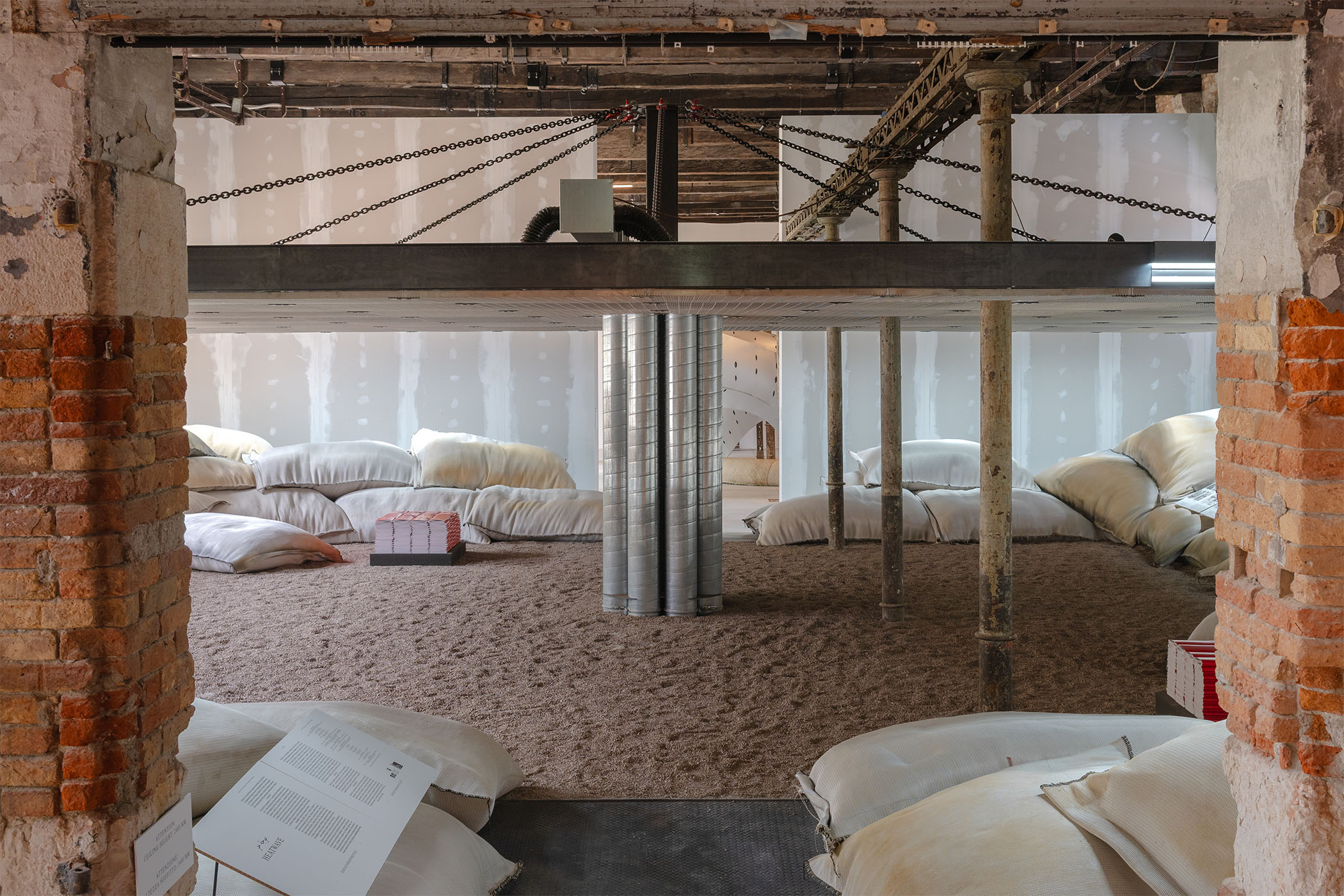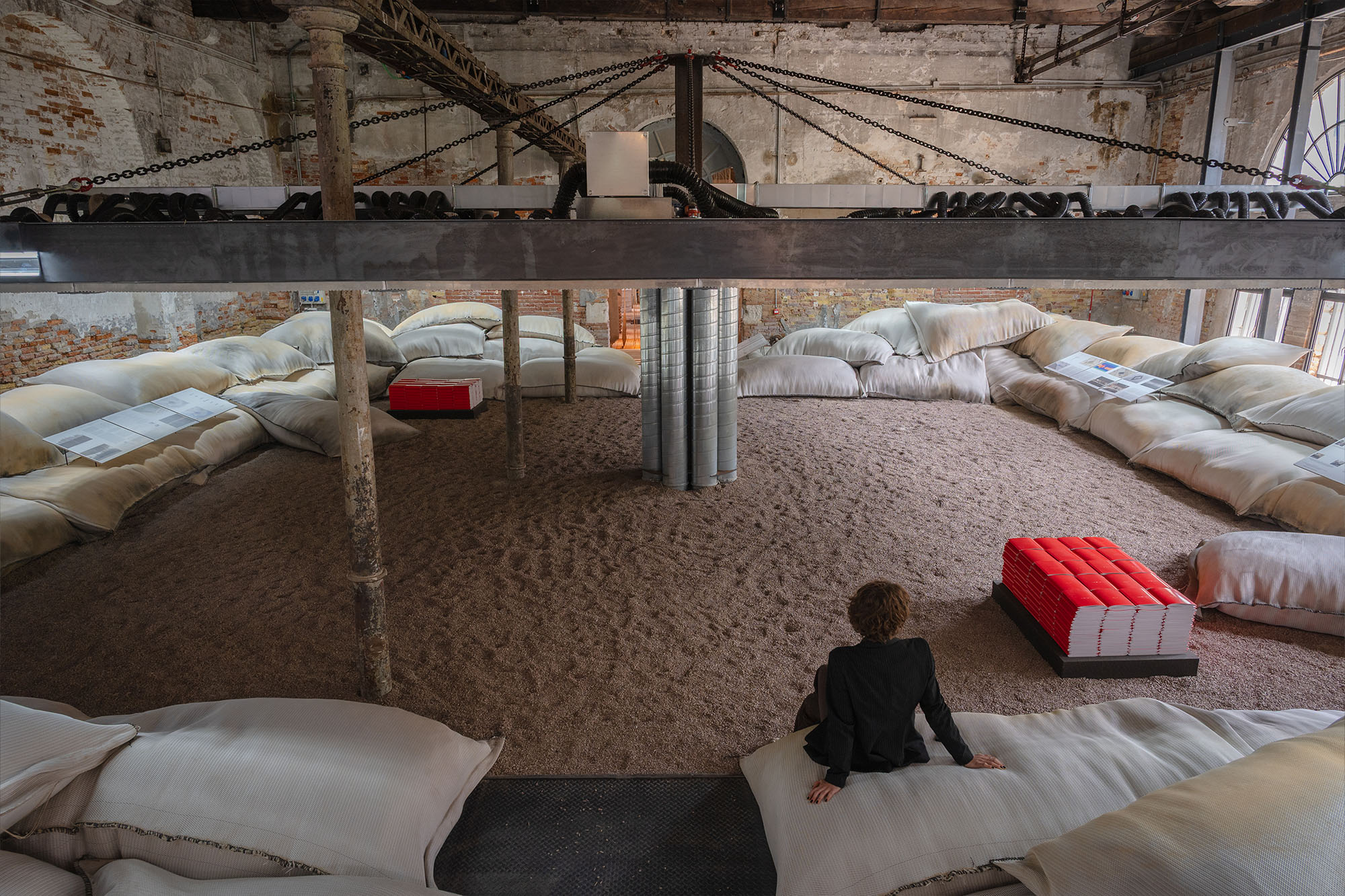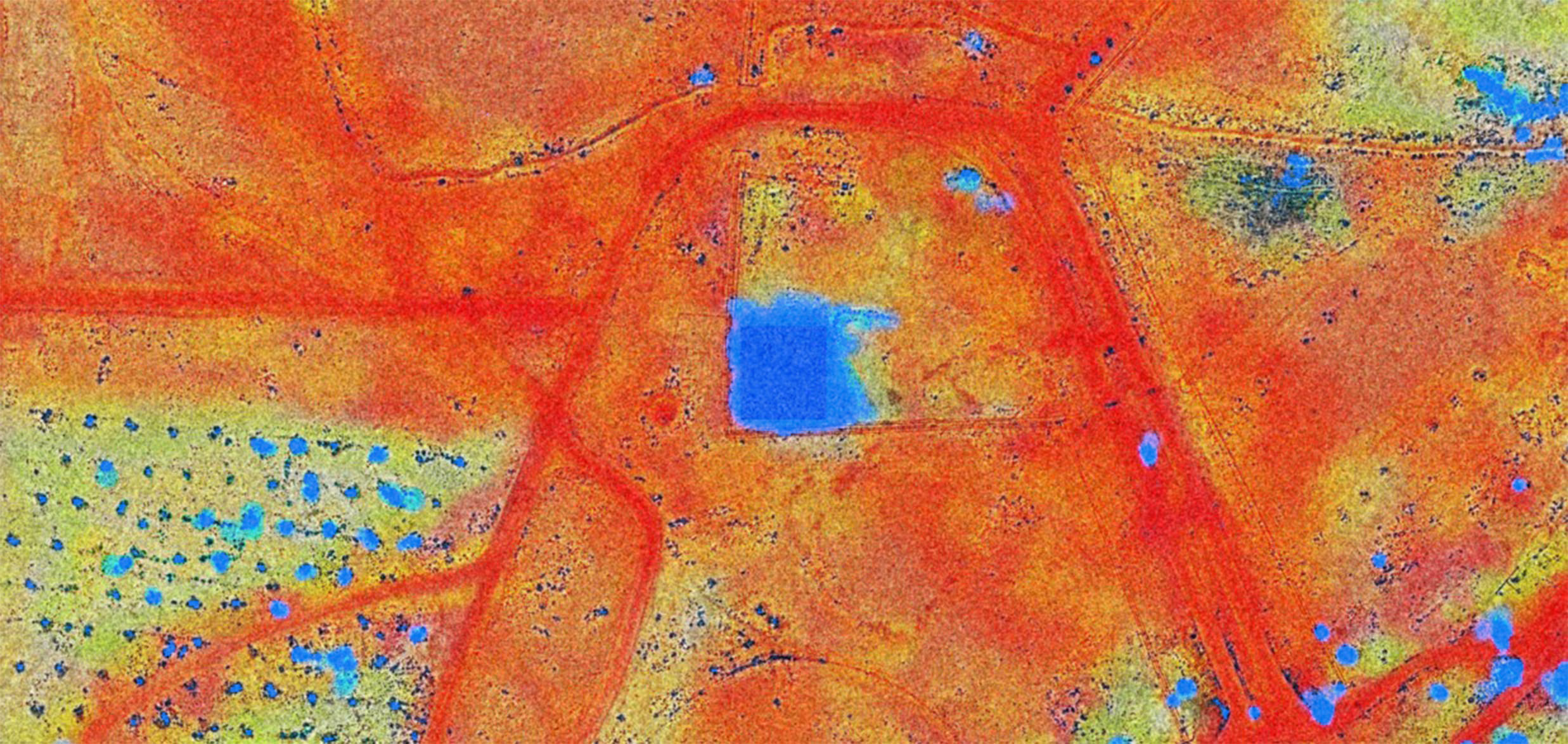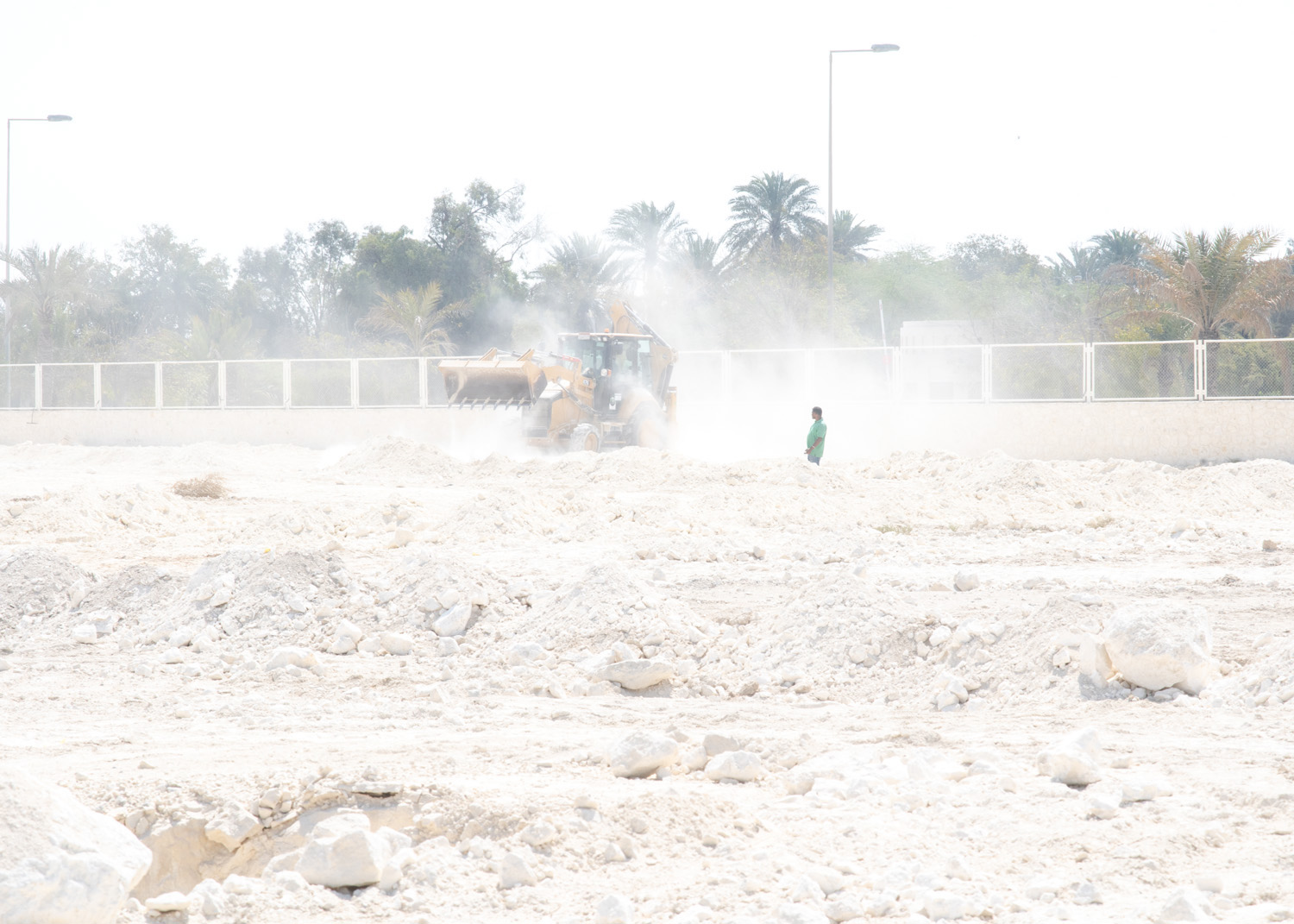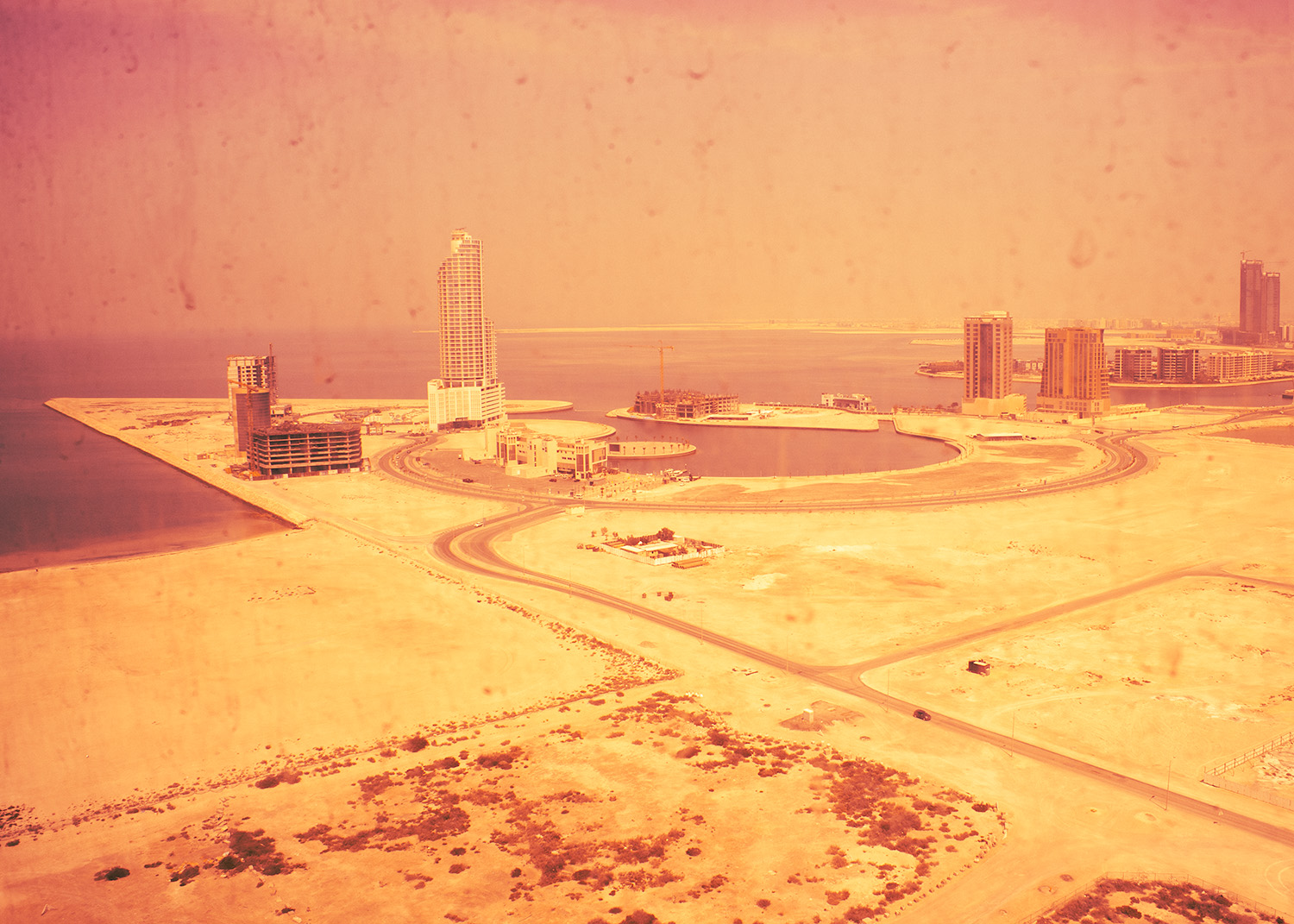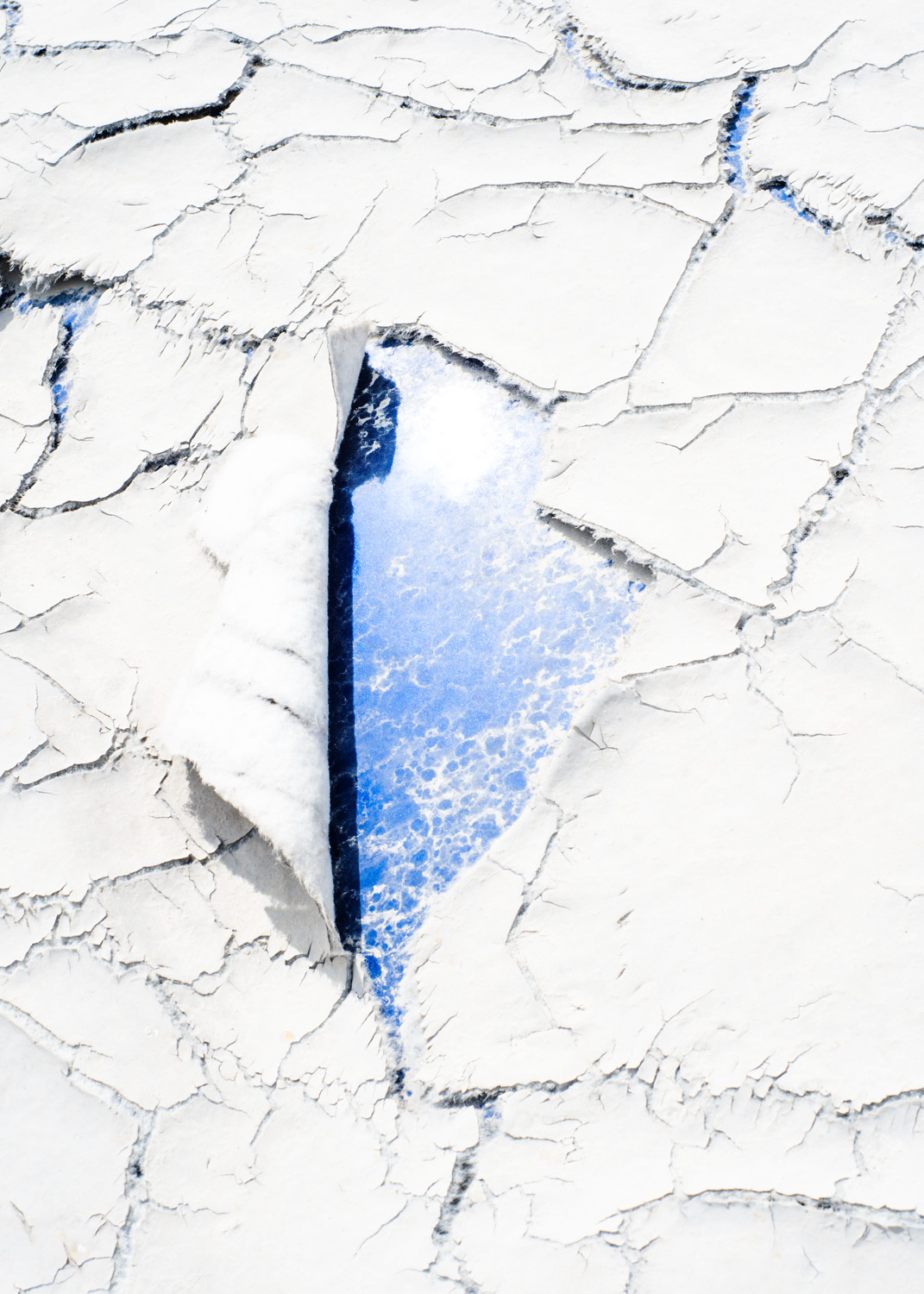Exhibition
HEATWAVE
The pavilion presents an architectural proposal to the growing challenge of rising global temperatures, with an outdoor passive cooling installation designed for public spaces. As heatwaves become more frequent, the need for architecture to address environmental resilience and social sustainability is greater than ever. As one of the countries at the forefront of extreme heat, the pavilion explores the potential of passive cooling and shading structures in Bahrain, in an effort to mitigate the effects of extreme heat in public spaces. It proposes adaptable solutions for enhancing thermal comfort in urban environments increasingly stressed by heat.
Installation
The design concept presented in Venice draws inspiration from traditional Bahraini cooling techniques with contemporary innovation, integrating a geothermal well and a solar chimney. A thermo-hygrometric axis connects underground conditions with exterior air, forming a compressed elemental space defined by a modular floor and suspended ceiling. This structure hosts visitors while framing views of the surroundings. In the exhibition space at the Artiglierie dell’Arsenale, where excavation for a geothermal well is not feasible, the system relies on mechanical ventilation, drawing air through a canal-facing window and guiding it through a network of ducts and nozzles to create a controlled microclimate. The pavilion’s architectural design is defined by a distinct floor and cantilevered ceiling of identical dimensions, supported by a single central column. Conceived as a modular unit, it is designed for scalable implementation across diverse urban conditions. Structural engineering by Mario Monotti and thermomechanical expertise by Alexander Puzrin contribute to this innovative system, which reimagines traditional climate-control methods in contemporary public spaces. The findings hold particular relevance for outdoor workspaces and construction sites in the Gulf region, where extreme temperatures pose both technical and social challenges. The pavilion proposes modular, scalable structures that offer shaded, thermally regulated rest areas, demonstrating how innovative design can enhance comfort and sustainability in challenging environments. The construction site serves as a focal point where climate, architecture, and social equity intersect. This theme is evoked in Venice through an abstract landscape of soil and sandbags, reinforcing the connection between built environments and the labor that sustains them.
Publication
Supporting the exhibition, a publication provides numerical analysis and qualitative speculations. It features expert essays on heatwaves, technical research, surveys, and an exploration of historical practices and evidence, extending the pavilion’s impact beyond its physical installation.

